In the fall I wrote about long term lounge plans at the Austin airport, with a new midfield concourse and a gate expansion of the current Barbara Jordan terminal being built, along with additional space being added in the main terminal.
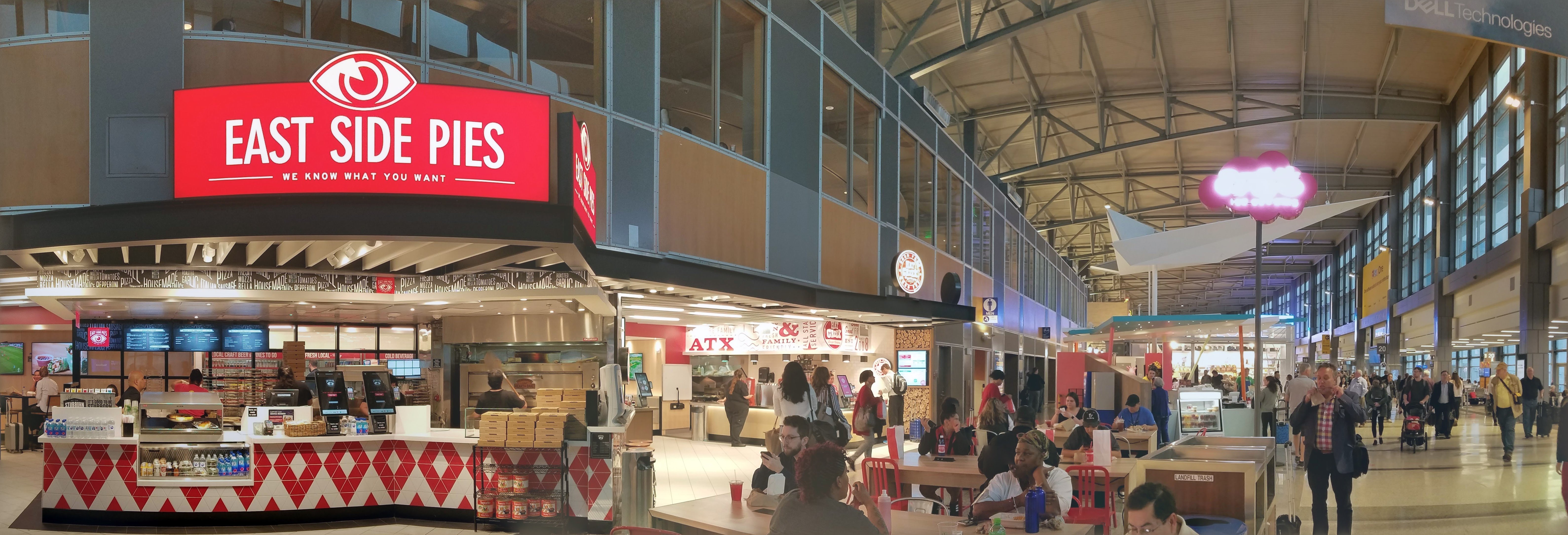
They’re building four new lounge spaces, there will be reshuffling of the current airline lounges and will make room for credit card issuers and common use operators that join programs like Priority Pass.
Currently, the airport features an American Airlines Admirals Club, United Club, and Delta Air Lines Sky Club. There was a temporary Chase ‘Terrace’ which closed last month.
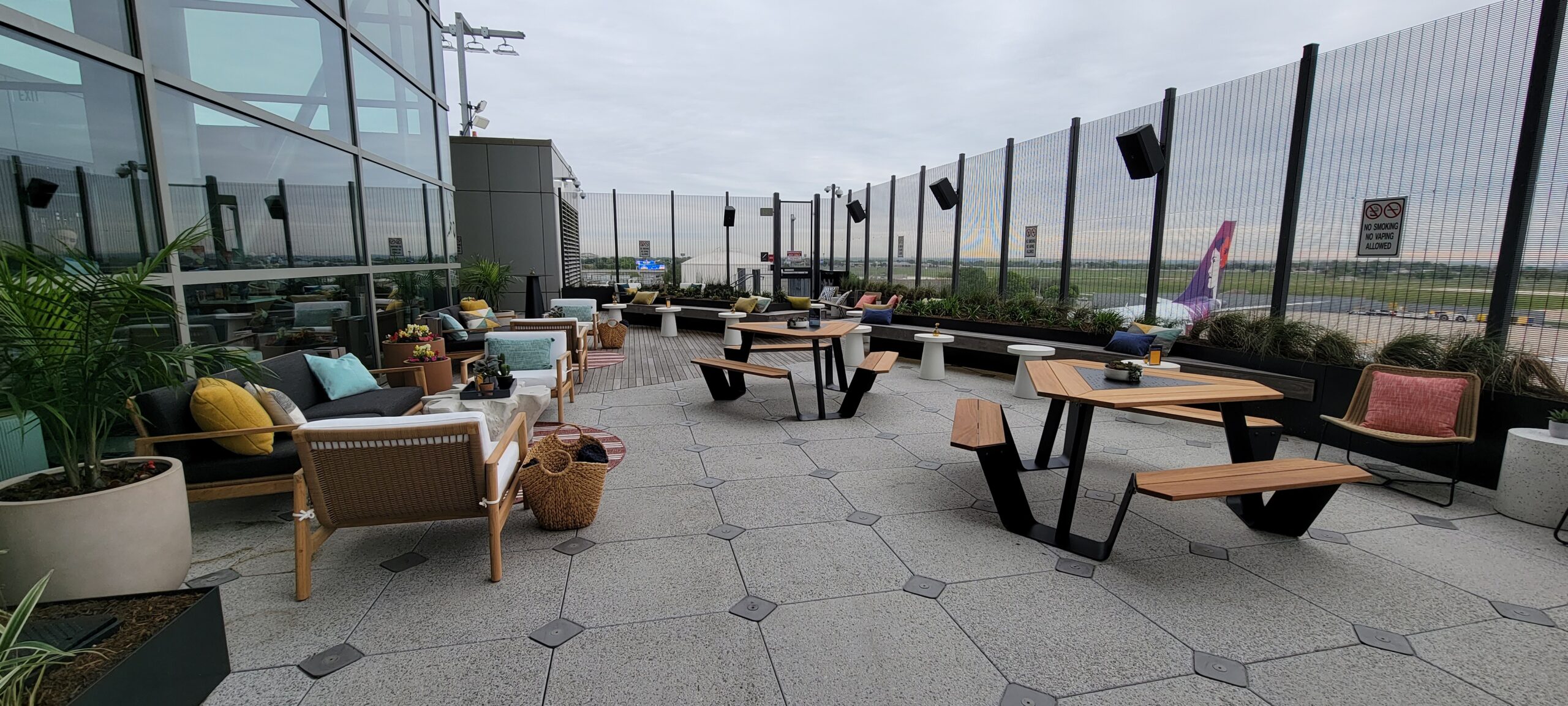
American Airlines leased 11,575 square feet of space in the new West Gate expansion that’s projected to open in 2027 and includes an outdoor terrace. This is a different location than what American announced for a new lounge (‘gate 14’) in November 2021. There will be a new 30,000 square foot lounge in the tunnel connecting the main concourse and new concourse and a 28,000 square foot lounge on the new concourse, along with 20,000 square foot lounge in the West Infill space.
I FOIA’d the airport for correspondence with airlines and potential other lounge operators to see what interest there is, matching the airport’s internal plans that I was first to reveal. Here is their responsive material.
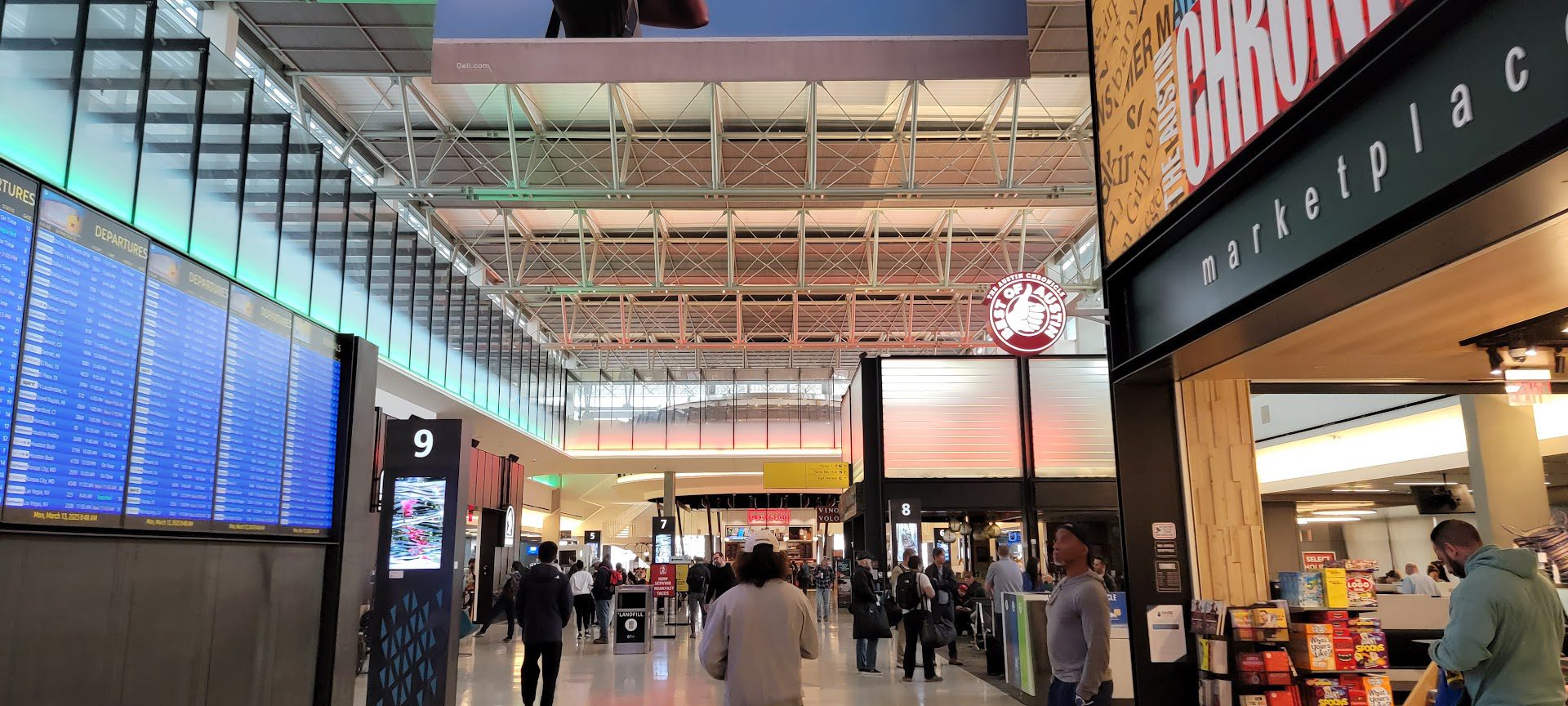
Delta Air Lines
Delta’s real‑estate team began working with the airport in late 2023 on a new Sky Club of roughly 25,000 ‑ 30,000 square feet linking the Barbara Jordan Terminal new concourse A to the east and the existing concourse D to the west. For the very first time, Delta exceeded American’s passenger numbers in Austin in April (though just by 4,068, so essentially they were flat with each other).
Internal e‑mails show Delta pushing for the club to be “mid‑concourse” and, if geometry allows, to offer direct jet‑bridge boarding from the lounge, which the carrier currently offers at their Atlanta B and Minneapolis G clubs.
A kick‑off workshop on August 5, 2024 confirmed that the schematic drawings already reserve about 25,115 square feet for the club plus vertical circulation; Delta will decide later whether to keep its present 9,000 square foot club once the new space opens.
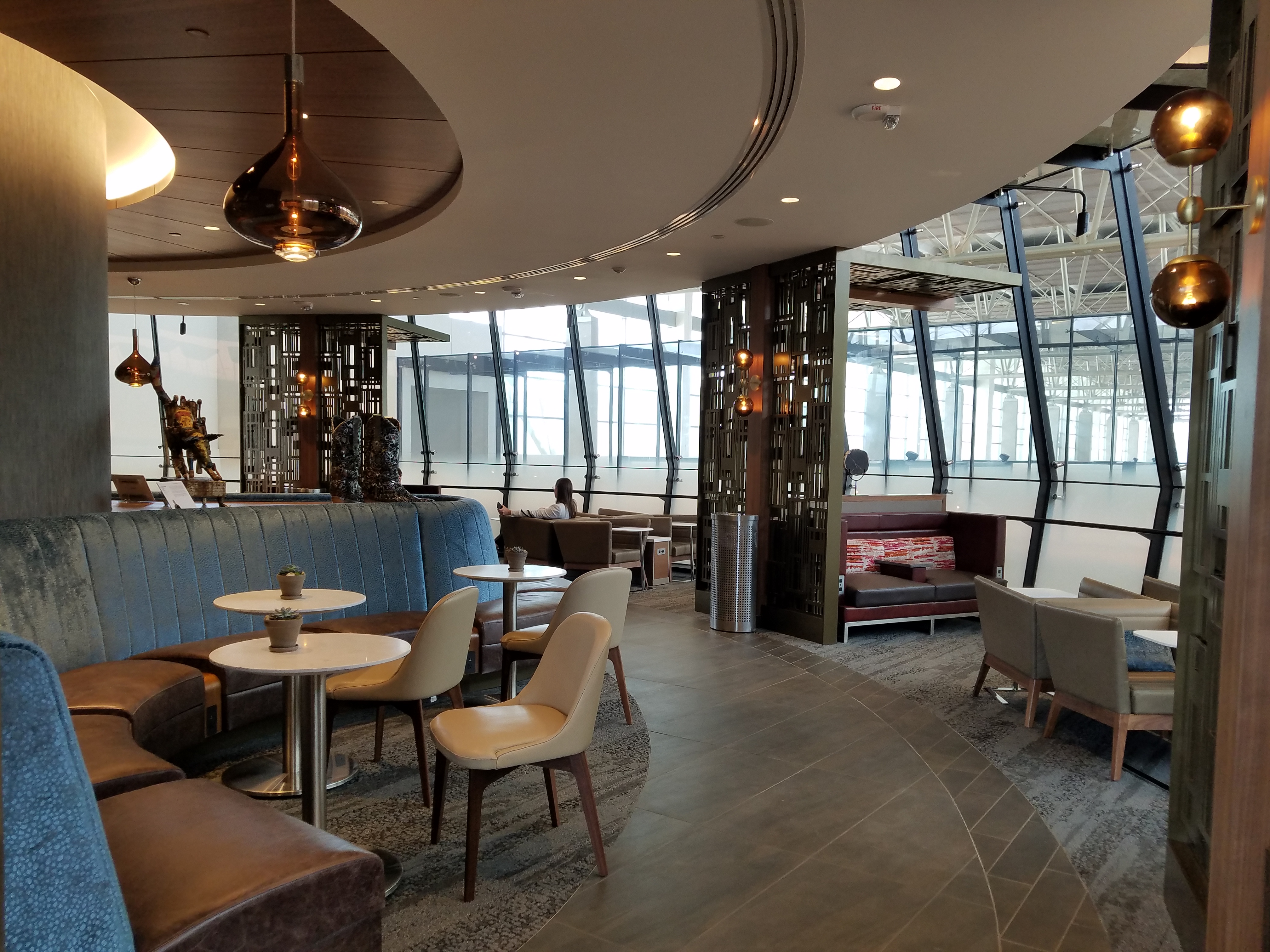
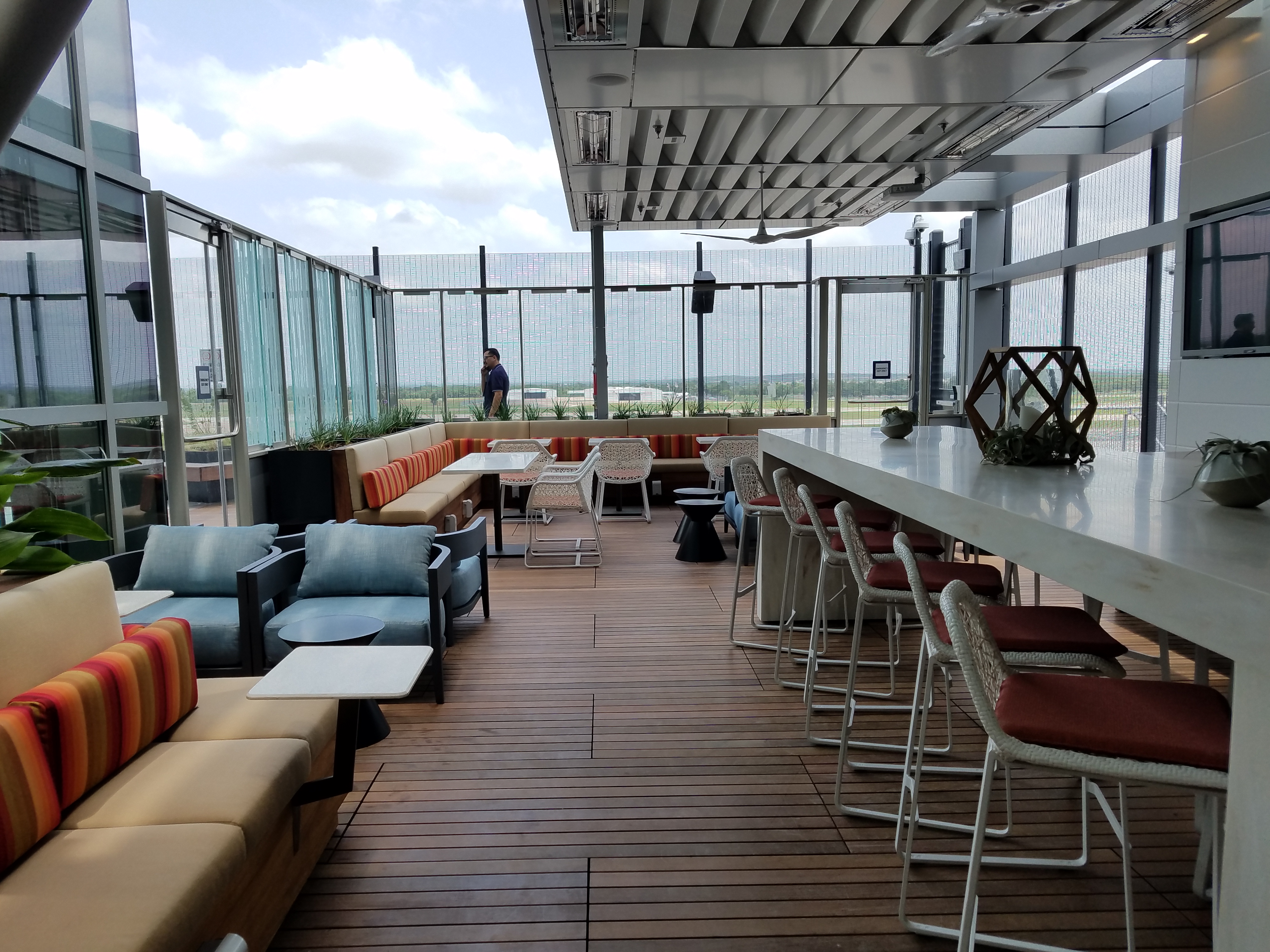
The airport is now collecting detailed utilities and IT requirements (survey issued Mar 2025), suggesting design development will start this year, with a realistic opening once the hall itself is delivered – currently projected for 2028.
Two possible clubs dovetails with a full move to the midfield concourse where they could triple or quadruple their current size, building a real Texas operation in Austin. They’re best-positioned to do this as American Airlines pulled back from its own focus city after losing money on a regional jet operation that violated its pilot scope clause (because regional jets are supposed to feed mainline flying at hubs).
American Airlines
American is surrendering its existing Admirals Club (near gate 22) and relocating to the West Gate Expansion mezzanine that is under construction immediately west of today’s gates 33‑34.
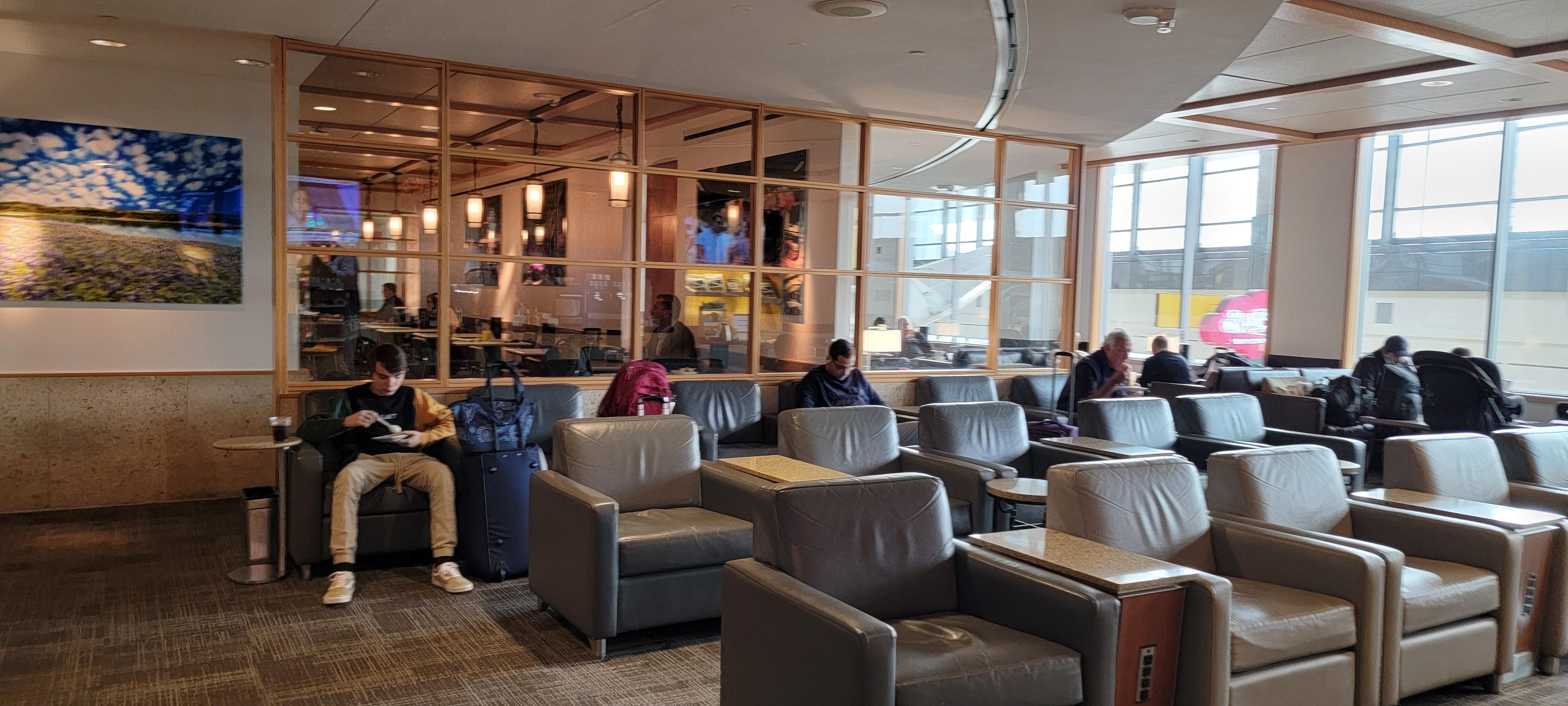
The design architect issued the “club area study” in January 2024 and the airport hosted an alignment meeting with AA on December 81, 2024 to talk through utilities, service core access and the schedule. The base‑building contractor expected a temporary certificate of occupancy in July 2025; American asked for early access before the ceilings and floors are closed so it could rough‑in plumbing and power.
Assuming the space is turned over in Q3‑2025, American could fit‑out and open the new lounge late 2026. My guess then is a 2027 opening. The move a dozen gates down situates the club above AA west gates and frees up the present club shell – a space United is already lobbying to inherit.
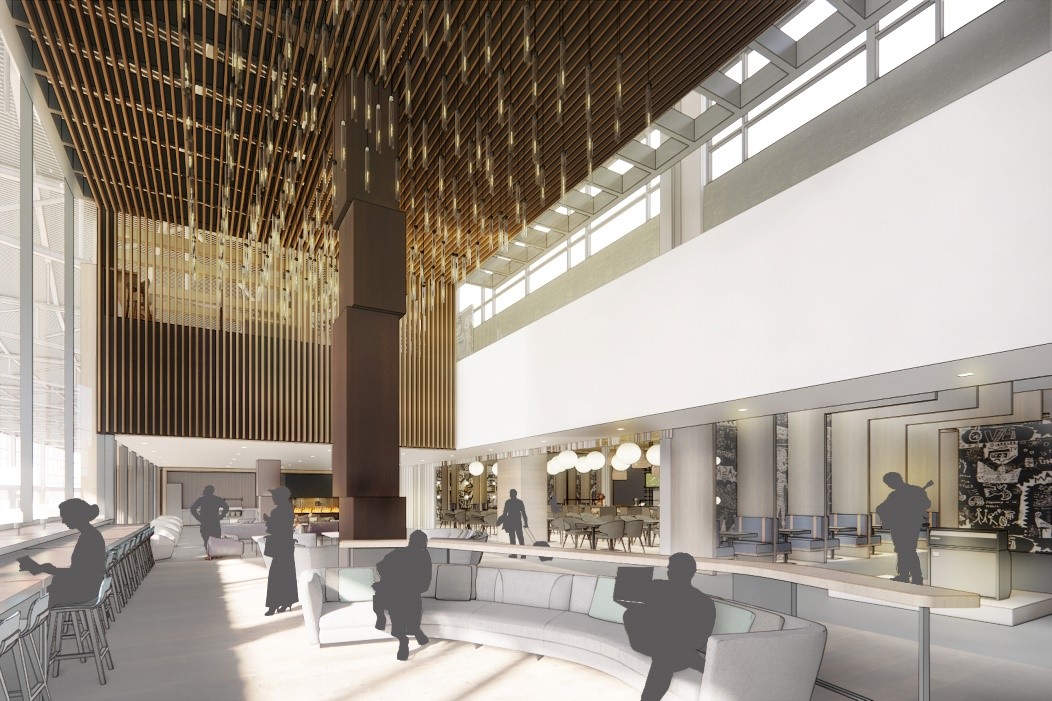
United Airlines
United is working on two parallel lounge projects. First, it wants to expand into American’s vacated club shell once they move west; discussions about takeover timing began in May 2024. Second, United is planning a new United Club in the future Concourse B, part of the long‑range expansion that will push the terminal east of today’s runway shoulders.
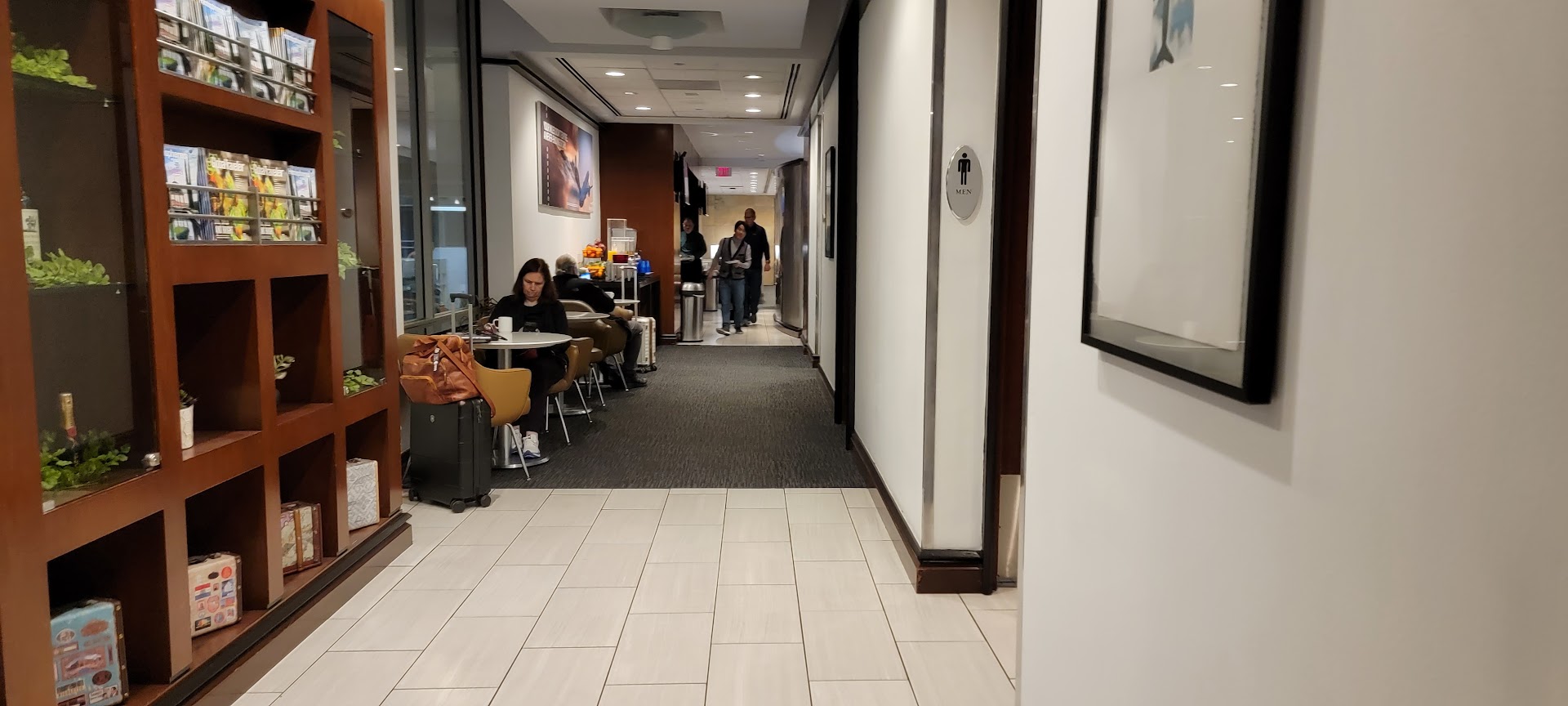
The airport sent United a formal survey on March 14, 2025 titled “New United Club at AUS” to capture HVAC, IT and program needs; United executives were briefed that finalizing the Concourse B gating plan is a prerequisite. Concourse B is the final element in the AEDP timeline (after the A/D Hall), so the new club is unlikely to open before 2028‑29, 2030 more likely, but the interim expansion could be ready several years earlier, preserving proximity to United’s current gate set near the center of the pier.
Capital One
Capital One has pursued a Capital One Lounge at the airport but is hostage to the city’s repeatedly delayed common‑use lounge RFP. E‑mails show the airport’s commercial development chief pushing the release from January to February 2025 and then pausing it again because the legal team is rewriting procurement policy while finalizing a new airline use and lease agreement.
Capital One continues to check in (they even hosted airport staff at their DFW lounge during the Airport Experience conference) but cannot bid until the RFP appears. The RFP is expected to cover shell space in the West Gate Expansion alongside American’s club. Any 2027 opening seems like a stretch at this point.
CAVU / Escape Lounges (MAG USA)
In April 2025, CAVU—parent of Escape Lounges—formally asked the airport to be briefed on “future AUS lounge opportunities.” They will almost certainly compete for the same common use RFP as Capital One; their e‑mail references Escape’s pay‑per‑use plus Priority Pass business model, which dovetails with Austin’s desire to diversify beyond airline‑run spaces. No design work is under way yet; timing will mirror whatever happens to the stalled RFP.
The lack of separate American Express correspondence released by the city suggests an Escape (Centurion Studio) would be their approach. That was the plan in 2020 that was tabled just before the pandemic.
TAV Airports / primeclass / HelloSky
TAV’s regional director reached out earlier positioning primeclass and HelloSky as additional bidders once Austin releases its lounge solicitation. They are currently in information‑gathering mode and have no space reserved, but their interest underscores the level of competition the city can expect when it finally moves ahead.
Chase Lounge / The Club
The city didn’t release correspondence with Airport Dimensions, which operates The Club lounges, however Chase was in the airport with a modest ‘terrace’ space for two years and would almost certainly be interested in space here (and, if not, one would expect Collinson to be interested itself).
How Pieces Fit Together
The West Gate Expansion should open next year adding three gates west of today’s pier, allowing the airport to lose three gates to build a connector with the planned new concourse. This will host American Airlines.
Delta plans to anchor a new “flagship” Sky Club above the confluence of concourses and immediately adjacent to its planned gate assignment. The mezzanine location also permits the vertical separation needed for the direct‑boarding concept Delta is studying.
United aims to grab the old Admirals Club shell to relieve crowding, and is considering a new, larger club.
Because the airport is prioritizing a new airline lease and a procurement‑policy rewrite, card issuers and independent operators cannot yet lock space. Collectively, the correspondence shows an airport trying to line up lounge growth with a multi‑phase terminal build‑out: airline‑specific facilities advance fastest, tied directly to gate realignment, while bank‑ and operator‑run lounges remain in limbo until the city gets its RFP house in order.
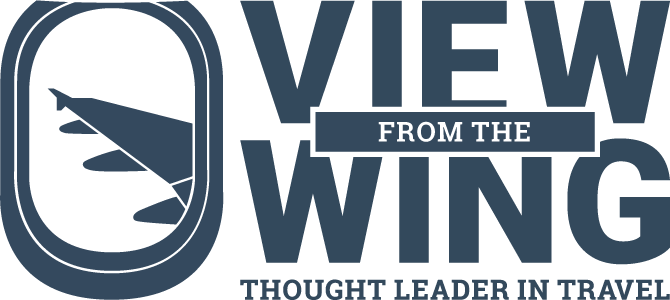

And Frontier, Southwest and Spirit share the cost and revenue of a new credit card activated water station. But it’s locally sourced water…none of that national/international water in the Live Music Capital of the World airport.
Gary, well done…very well done, this is great intel.
I’d like to see them move the car rental facility back to where it used to be where the parking is now.
Thank you for the update, Gary. When pages are redacted in a publicly released document compilation, it would be beneficial if the agency could provide a reason for withholding information on their public project, along with the name of the person who authorized the redaction of those selected pages in the requested document.
Delta definitely does not offer jet-bridge boarding from any lounge in ATL. They do offer it in ORD if that’s what you meant.
Wait? Delta has direct jet bridge access from the B SkyCkub? Huh, never seen that before. That must be one mighty tall jet bridge.
Happy for Delta, if true, because they really should be making a play in Texas, as @Tim Dunn has suggested before. While American has DFW and United has IAH, why not become lead at AUS. I’m sure Gary (and the others in the region) would appreciate the increased competition and new lounges. Woop!
1990
This news isn’t terribly new but I commend Gary for finding the documentation to prove that DL is setting itself up for further AUS growth.
DL recognizes the only hole in its network is Texas. It is a huge state and local market and it is growing.
Every airline has their own strengths and weaknesses but DL has a better path to addressing its TX needs with AUS than AA or UA have in their market weaknesses.
And given that AUS is not a two airport metro like the Dallas/Ft. Worth and Houston metros, it will be interesting to see how DL and WN compete against each other. DL’s AUS growth has largely been opportunistic and slow at AUS but WN is still carrying around a huge amount of underperforming routes on a system basis.
There is either a push by Elliott for WN to really deliver bottom line results or DL starts feeding up for the sick and wounded WN or they start walking away from large portions of their network – or sell pieces of it.
the most remarkable part of this story is that UA thinks it will push on AA in AUS; UA fell to #4 years ago. DFW is just a better hub than IAH and that impacts every spoke city in Texas. DL and WN will increasingly be playing for the local market.
@Tim Dunn — I’m with you, 100%. I see Southwest’s loss as Delta’s gain. As I’ve predicted before, depending on how all the changes go at Southwest, I wouldn’t be surprised by a Northwest-style merger or a Pan Am-style purchase of assets by Delta of Southwest in the coming years.
Good comment on the Southwest underperforming routes at Austin. Being a 737 only operator, and only able to get Max-8 and not Max-7 at the present time is really hurting them. DL has the right equipment mix to make money on routes where SW is losing money.
Feb SW stats, reposted from a certain avgeek website. March numbers are available now on BTS but I’m not familiar with how to use the database interface.
begin quote jplatts from airliners.net:
Here were the number of passengers, number of seats, and load factors for WN nonstop routes out of AUS in February 2025 (Source: T-100D Domestic Segment, which can be found at https://transtats.bts.gov/databases.asp … wrp6_VQF=D):
ABQ-AUS – 9179 passengers, 14410 seats, 63.70% load factor
AMA-AUS – 2457 passengers, 5250 seats, 46.80% load factor
ATL-AUS – 18966 passengers, 31477 seats, 60.25% load factor
AUS-BNA – 29172 passengers, 45506 seats, 64.11% load factor
AUS-BUR – 5768 passengers, 7293 seats, 79.09% load factor
AUS-BWI – 16659 passengers, 25798 seats, 64.57% load factor
AUS-CMH – 6105 passengers, 8780 seats, 69.53% load factor
AUS-DAL – 33505 passengers, 59159 seats, 56.64% load factor
AUS-DCA – 6734 passengers, 9736 seats, 69.17% load factor
AUS-DEN – 44768 passengers, 58127 seats, 77.02% load factor
AUS-ELP – 14337 passengers, 21782 seats, 65.82% load factor
AUS-FLL – 7955 passengers, 9160 seats, 86.84% load factor
AUS-HOU – 18058 passengers, 34105 seats, 52.95% load factor
AUS-HRL – 9849 passengers, 16504 seats, 59.68% load factor
AUS-IND – 6525 passengers, 8492 seats, 76.84% load factor
AUS-LAS – 37835 passengers, 52851 seats, 71.59% load factor
AUS-LAX – 15013 passengers, 25397 seats, 59.11% load factor
AUS-LBB – 4226 passengers, 7632 seats, 55.37% load factor
AUS-LGB – 9027 passengers, 13994 seats, 64.51% load factor
AUS-MAF – 4229 passengers, 7425 seats, 56.96% load factor
AUS-MCI – 11713 passengers, 19114 seats, 61.28% load factor
AUS-MCO – 36103 passengers, 42089 seats, 85.78% load factor
AUS-MDW – 17245 passengers, 28741 seats, 60.00% load factor
AUS-MIA – 8432 passengers, 9497 seats, 88.79% load factor
AUS-MSP – 3970 passengers, 7152 seats, 55.51% load factor
AUS-MSY – 24662 passengers, 39470 seats, 62.48% load factor
AUS-OAK – 7263 passengers, 8588 seats, 84.57% load factor
AUS-OKC – 3194 passengers, 5263 seats, 60.69% load factor
AUS-OMA – 329 passengers, 700 seats, 47.00% load factor
AUS-ONT – 6372 passengers, 9288 seats, 68.60% load factor
AUS-ORD – 4682 passengers, 8872 seats, 52.77% load factor
AUS-PHX – 33774 passengers, 51031 seats, 66.18% load factor
AUS-PIT – 3813 passengers, 5406 seats, 70.53% load factor
AUS-RDU – 7141 passengers, 10669 seats, 66.93% load factor
AUS-SAN – 21967 passengers, 30178 seats, 72.79% load factor
AUS-SJC – 18587 passengers, 28065 seats, 66.23% load factor
AUS-SJU – 630 passengers, 700 seats, 90.00% load factor
AUS-SLC – 10775 passengers, 14438 seats, 74.63% load factor
AUS-SMF – 10251 passengers, 13738 seats, 74.62% load factor
AUS-SNA – 5681 passengers, 6864 seats, 82.77% load factor
AUS-STL – 12601 passengers, 19368 seats, 65.06% load factor
AUS-TPA – 17682 passengers, 24704 seats, 71.58% load factor
AUS-TUL – 3400 passengers, 5250 seats, 64.76% load factor